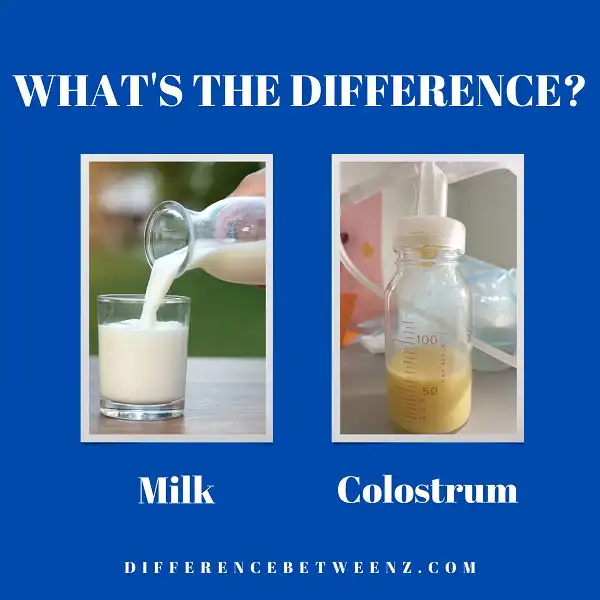In the dairy industry, milk and colostrums are two common products. Though they have some similarities, they also have some key differences. In this blog post, we’ll take a closer look at those differences to help you understand what each product is and why it’s important. Stay tuned!
What is Milk?
- Milk is a nutritious liquid that is produced by mammals and is intended for their young. It is composed of water, fat, proteins, and carbohydrates. The composition of milk varies depending on the animal species, but all milk contains similar nutrients.
- Milk has been a part of the human diet for thousands of years. It is a staple food in many cultures, and it has many uses beyond simply drinking it. Milk can be used to make cheese, butter, yogurt, and kefir. It can also be used as a cooking ingredient in many recipes.
- Despite its widespread popularity, some people are unable to digest milk properly. This is because they lack the enzyme lactase, which breaks down lactose, the main sugar found in milk. When people with lactose intolerance consume milk, they may experience gastrointestinal symptoms such as bloating, diarrhea, and abdominal pain.
- Overall, milk is a healthy and versatile food that has been consumed by humans for centuries. Its nutrients make it an excellent source of nutrition, and its many uses mean that it can be enjoyed in many different ways.
What is Colostrum?
- Colostrum is a yellowish, thick fluid that is secreted from the mammary glands of mammals during the late stage of pregnancy. It is rich in antibodies and nutrients, which are vital for the health and development of newborns. While the composition of colostrum varies depending on the species, it typically contains high levels of protein, fat, and immunoglobulins.
- In humans, colostrum is produced during the last few weeks of pregnancy and continues to be secreted for the first few days after birth. After that time, it is replaced by mature milk. However, colostrum is still an important source of nutrition for infants, and many mothers choose to pump and store their colostrum in case their baby needs it.
- Colostrum has a wide range of potential health benefits, both for infants and adults. It is sometimes used as a treatment for gastrointestinal issues, respiratory infections, and allergies. Additionally, colostrum supplements are often marketed as a way to improve exercise performance and boost immune system function. While more research is needed to confirm these claims, colostrum remains an important part of mammalian reproductive biology.
Difference between Milk and Colostrums
- Milk is a white liquid produced by mammals. It is the primary source of nourishment for young mammals before they are able to digest other types of food. Colostrums are a thick, yellowish fluid that is produced by the mammary glands of mammals during late pregnancy and the early stages of lactation.
- Colostrums contain high levels of antibodies that help to protect newborns from infection. After birth, the level of antibodies in colostrums declines, and it is replaced by regular milk. However, colostrums continue to be an important source of nutrients for newborns and infants.
- So what’s the difference between milk and colostrums? Milk is produced throughout lactation, while colostrums are only produced during the early stages. Milk contains less fat than colostrums, and it has a higher concentration of lactose. Colostrums also contain higher levels of antibodies than milk.
- For newborn mammals, colostrums are essential for survival. It helps to protect them from infection and provides vital nutrients that they need in order to grow and develop properly.
Conclusion
Milk and colostrums are both important for newborns, but they have different functions. Colostrum is a thick yellow fluid that is produced in the first few days after giving birth. It contains high levels of protein, antibodies, and other nutrients that help protect the baby against infection.
Milk is a white liquid that is produced once the baby begins to nurse. It contains lower levels of protein and antibodies than colostrum, but it is rich in fat and sugar which helps to nourish the baby. Both milk and colostrums are essential for providing newborns with the nutrients they need to grow and develop properly.


